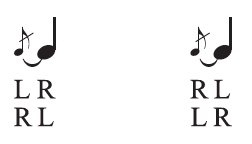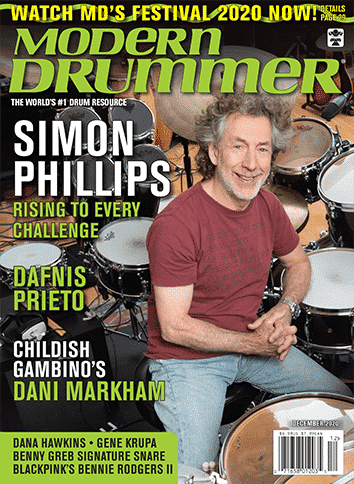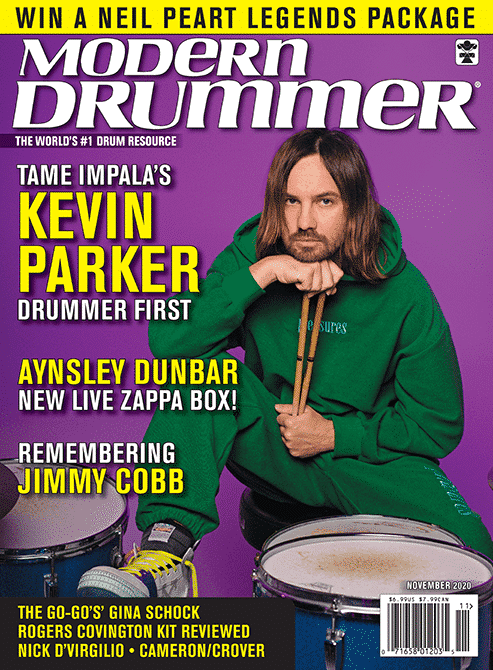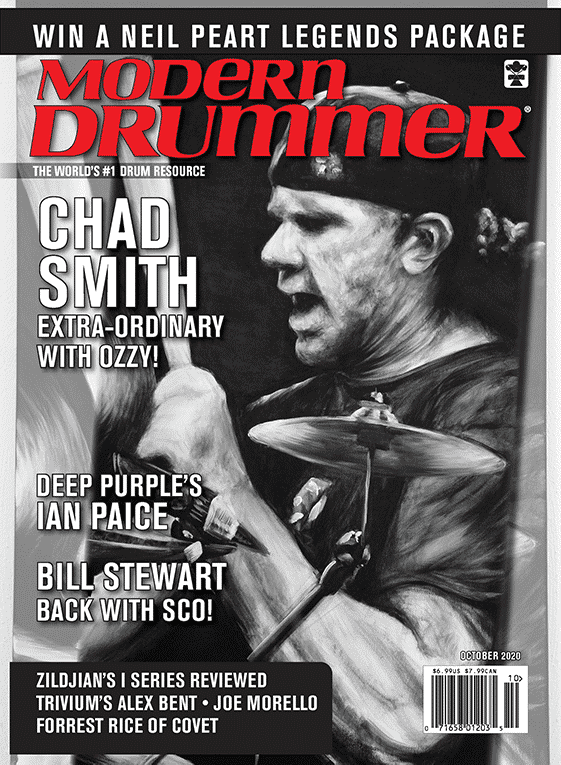Bill Bachman: Top 10 Rudiments Part 6: Hand-To-Hand Flams

Playing alternating flams demands a certain amount of chops. Playing fast hand-to-hand flams require a different kind of chops—whipping Moeller strokes. If you can master the technique needed to play hand-to-hand flams at all tempos, your accent/tap motion will become much stronger and faster while requiring less energy.
A flam is simply a grace note tied to a main stroke. The primary note has metric value and should land exactly in time. The grace note is used to add texture and thickness to the sound and should be placed just before the primary note. If the grace note hits at the same time as the primary note, then you’re playing a “flat flam,” which is actually a double stop (two notes in unison) and not a flam at all.
A player with good control can play both tight flams, where the grace note is placed very close to the primary note, and wide (or fat) flams, where there’s a bigger space between the grace note and the primary stroke. Ultimately, grace note placement is a musical choice based on style, drumhead response, and speed. Advertisement
Let’s look at the technique you’ll need to play alternating flams at slow and medium speeds. Each hand plays a high accent stroke followed by a low grace note. Use the downstroke/ upstroke technique for these. Be sure to squeeze the stick a bit with your fingers after the accent in order to freeze the stick pointing down toward the drum. Then play a relaxed low grace note as an upstroke, since you’ll need to lift the stick for the following accent. Avoid hitting the accents extra hard and with tight strokes, where your fingers are squeezing the stick while you play the grace notes. Other than the split second after the accent, when you stifle the stick’s rebound, everything should flow smoothly. Note that the downstroke is also commonly referred to as a staccato stroke. Staccato is the musical term meaning short and separated, which in this case refers to the accent’s hand motion being short and separate from the following grace note’s hand motion.
If you tried playing fast hand-to-hand flams using the aforementioned technique, your wrists would tighten up and seize, since there’s not enough time to stop the stroke, restart the motion, and then lift up. This is where the Moeller whip stroke comes in to replace the wrist motion with a forearm motion. When you use the forearm, the wrist can relax. Don’t stop the stick after the accent. Let the accent stroke’s energy flow into the next grace note using the Moeller whip-and-flop technique. This grace note should be played with what I call a Moeller upstroke, where the stick hits the drum as you lift the forearm, with the wrist hanging limp.
The technique behind playing fast hand-to-hand flams with the Moeller technique will be easier to understand as you play Example 1, which isolates the motions in each hand. You should feel like you’re playing quarter notes with your forearm while a little rebound stroke drops in on the upbeats. This is the key hand motion for fast hand-to-hand flams. (It’s similar to the shoulder/tip hi-hat motion that many drummers use when playing 8th-note grooves.) Advertisement


This article is culled from Bill Bachman’s popular Stick Technique book, which is designed to help players develop hands that are loose, stress free, and ready to play anything that comes to mind. The book is for everyone who plays with sticks, regardless of whether you’re focusing primarily on drumset, orchestral percussion, or the rudimental style of drumming. Divided into three main sections – Technique, Top-Ten Rudiments, and Chops Builders – Stick Technique is designed to get you playing essential techniques correctly and as quickly as possible. Also includes a bonus section two-hand coordination and independence.






